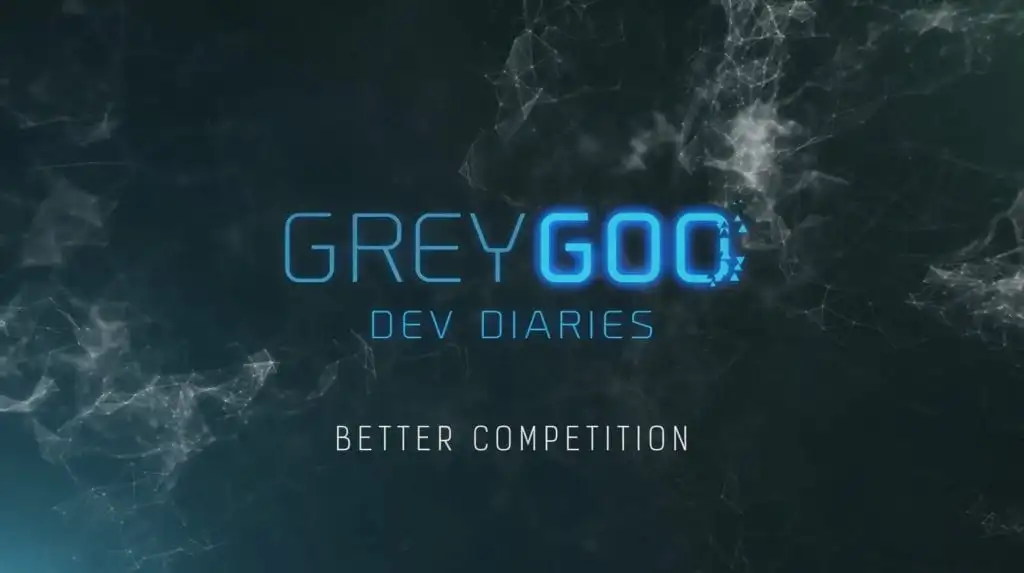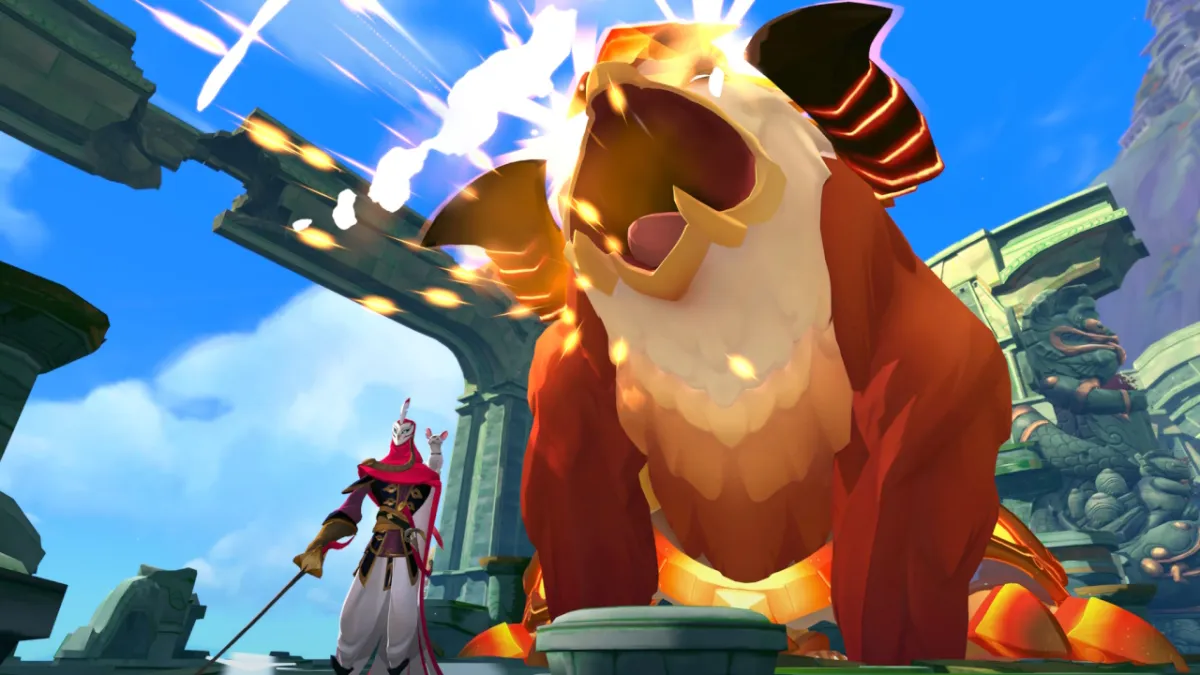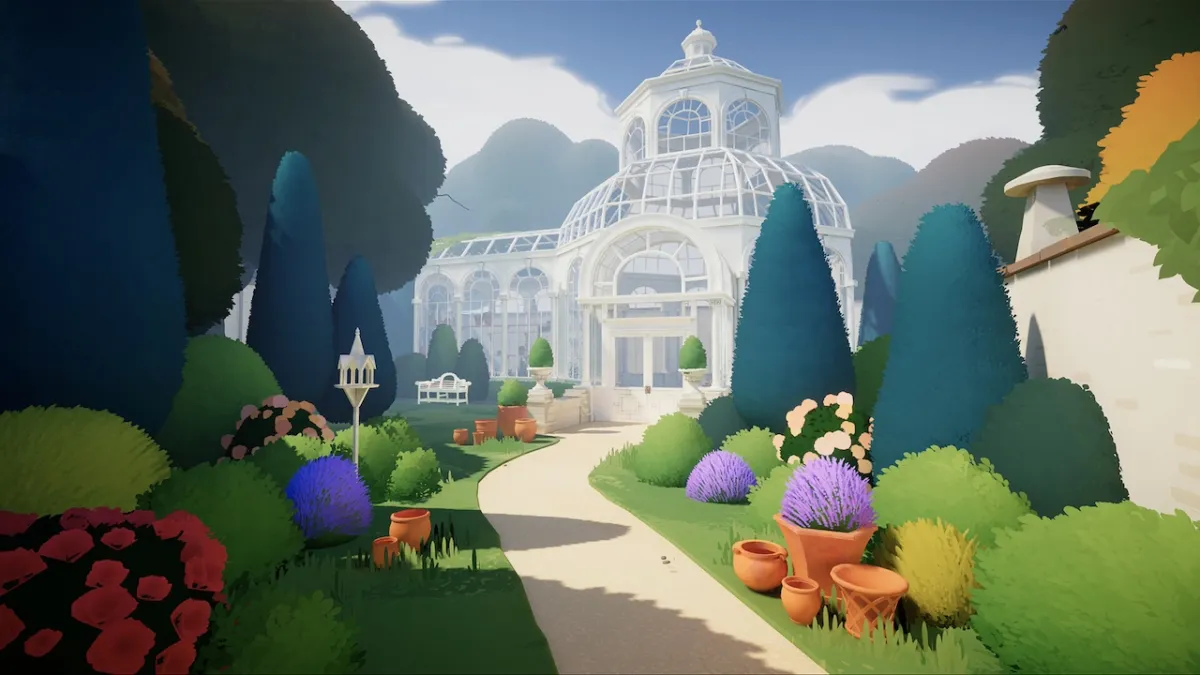Petroglyph has been striving to create a new top-notch RTS for a while. Members of the team have worked on top sellers such as Command & Conquer, which I think everyone will agree is a classic. The company had the misfortune of having End of Nations pulled away from them by Trion (the game was eventually canned) and then their attempted Victory WWII Kickstarter didn’t capture the imagination of backers.
I’d not really been following Grey Goo much, in part because it’s not a game with the kind of carpet-bombing approach to marketing certain other titles have. The team probably hope the game would sell itself on the back of reviews. Having avoided too much early footage I was going into Grey Goo all fresh with no spoilers, which was actually a pleasant change.
Grey Goo is an odd title but it makes sense if you know what the game is about. If, on the other hand, you have no idea then it’s just a ridiculous and amusing name for an RTS. The Goo name (I shall quote Wikipedia here) is “a hypothetical end-of-the-world scenario involving molecular nanotechnology.” Now you know: it’s clever and silly.
To quickly go over the story, humanity sent out space probes to find new life, but found nothing and abandoned all further exploration. Until, that is, they started receiving a signal from one of the planets. The humans went off to investigate, only to find that a race called the Beta had since inhabited the world. A minor catastrophe puts the humans face to face with the Beta and the now self-aware (and titular) Goo, which was actually a human creation left behind at an earlier date. That’s it in a nutshell.
Great presentation can make or break an RTS. The way in which the game factions and units are presented to the players and how they tie-in with the plot can make all the difference. Petroglyph has realised that perhaps some extra help was needed in this area, and called in some help from WETA (District 9/Lord of the Rings etc.) The game world, lore, characters and unit design were all put together by WETA, and their influence is obvious right from the very first mission where you play as the Beta.
Most strategy games kick the first missions off with the humans, but not in Grey Goo. You start the first five mission as the Beta, an alien race that has colonised the planet where the action takes place. The Beta are in a struggle against the Goo and are now in the process of evacuating their population. That’s the basic premise for the first part of the campaign and is an underlying story thread throughout.
Although the Beta are an alien race, they are humanoid and their design oozes WETA influence. Their buildings, technology and units are also less alien-like than you might expect. In fact both the Human and Beta factions share some similarities with buildings and units; though there are enough small differences that actually make the gameplay for each feel quite different.
This is a traditional Real-Time Strategy game and Petroglyph has included all the classic RTS staples: resource collection, base building and unit production. They’ve not tried to over-complicate things and this is a huge plus point for Grey Goo. As a fan of more traditional RTS’, it was evident right from the get-go that this was going to be a game that would be easy to understand but hard to master; the backbone of all classic RTS titles.
As the Humans and Beta you need to construct refineries, which in turn send out harvesters to collect the resources. One feature I appreciate in this system is the delivery of the resources back to the refinery. If a refinery is long way from a resource node, the refinery automatically generates more harvesters. This means that there’s a constant tick of resource coming in via a convoy of more or fewer harvesters, depending on how far away from the refinery is. Should harvesters get destroyed, the refinery simply builds another and sends it out. This removes some of the problem we often see in RTS games where the harvesters are under constant attack. Fans of the original C&C games will be more than familiar with that problem.

The Beta are an attractive bunch.
There is a tech tree for all factions and the Beta and Humans have to build certain buildings to unlock more advanced structures, so that’s all nice and familiar. There are subtle differences on how this works for the two factions however. The Beta need to build hubs, and building are attached to these to gain power. Hubs are also used to expand out into the map. The humans, on the other hand, have to power their structures by connecting conduit pipes to buildings which can be a little trickier. It’s also potentially disastrous if the link gets broken as buildings will power down.
The structures themselves need to be augmented by tech buildings, and the type of tech buildings you attach to a factory will determine what the factories can build. Again, some thought has to go into which tech structures are attached, otherwise some units won’t be available. It also means you need to build the same structure more than once, then augment it with the tech building attachments. This requires some forward planning, depending on your strategy.
The way in which all this pieces together works incredibly well, and although some players may think the Beta and Humans may be a little too similar, that is actually not detrimental to how Grey Goo plays. If you think about C&C for example, most of the units and structures were similar no matter which side you picked. There were nuanced differences, which meant you had to be creative with your strategy. The same applies in Grey Goo.
OK, so the Beta and Humans are similar but what about this Goo stuff? When I first came across the Goo in the campaign my initial thoughts were “how the hell do I tackle this stuff?” It’s a constant stream of self replicating Goo. It’s not until you actually reach the Goo part of the campaign that it all becomes clear: it plays very different to the two other factions.
The Goo starts with a Mother Goo, which needs to be moved onto a resource node. The Mother Goo extracts the resources and, as she fills up, more options unlock. You can spawn a smaller Goo or larger Goo from the main Goo. Each of these can then be changed into the Goo faction’s different units with another click. The Mother Goo gathers furthers resources and can also become an effective weapon when fully charged. Think of being “charged” as health.
The natural instinct is to spawn these small or large Goos and then quickly change them into Goo units, but they actually serve as an effective unit themselves. The large Goo is particularly devastating on its own. This thing can shift around the map easily and can take some real punishment. And the best thing about the Goo in its raw form? It literally devours units and structures. Move it close enemy units and they are swallowed up. Place it next to a building and that building takes some real damage. The Goo blobs are also highly mobile and can roll over the tops of hills making it tricky to track and attack.
Playing as the Goo took some getting used to but after a couple of missions it starts to be really enjoyable. You realise that to be truly effective you need to take as many resource points as possible with multiple Mother Goos, then start creating large and small Goos (and ultimately units) from those. The more Mother Goos you have, the more you can produce.
All three factions come with a good variety of units. There’s tank units, artillery, air, scouts and infantry, all with their own strengths and weaknesses. The good news is, and this is something else I love about Grey Goo, Petroglyph hasn’t overloaded the game with unit types. This encourages the use of real strategy. It’s also good to see that units don’t gain experience on the battlefield, which is a feature that’s crept into RTS games over the past decade. I prefer to see it kept simple like that.
The maps and missions are engaging enough, and the game can feel quite punishing during the campaign. Missions usually come with a main objective and a few bonus objectives should you wish to take up the challenge. You might have to stay undetected by using the foliage for cover, or secure a bunch of scattered farms. I had quite a few visits to the menu screen to either surrender or reload a saved game, and even trying a couple of missions on easy mode. They were still challenging.

Let battle commence!
Giving players as many customisation options as possible has obviously been an important factor, because the options screen is stacked. Grey Goo features highly visible and exhaustive hotkey options on the interface, making it super simple to create units with the press of a few key combos. There’s no requirement to head to the base, select the building and then a unit. Like the original C&C games, everything can be built straight from the menu at the bottom of the screen and it makes life so much easier with a lot less micro management. That’s what I have particularly enjoyed while playing; there’s no messing about or struggling against the UI, which allows you to concentrate on the strategic side of things. It takes some practice, but if you want to become really good then mastering the hotkeys is paramount.
There is one of thing that’s a slight niggle. The Grey Goo campaign spans 15 missions (five missions per faction) which I think is about six missions too short in total. It could do with a further two missions per faction so you have enough time to really play around with the super advanced units like the Epics. You will get around 15 hours of game time from the whole campaign though, so if that feels like enough then there’s no problem.
While I’m on the subject of Epic units, each faction has one. They’re expensive to build and perhaps a little slow on the battlefield. I actually don’t want to spoil what they are in the review in case you do intend to pick this up, but they are highly effective if used wisely. Especially the Beta’s Hand of Ruk.
Real long-term enjoyment in any RTS depends on the game’s multiplayer and Grey Goo has that well covered (there’s also a skirmish mode.) Ranked and unranked multiplayer (as well as a quick play button) are all available, and it’s worked brilliantly during testing. Better yet, there seems to be no shortage of people playing the game right now. And rightly so. Eight maps are available for 2 to 4 players each, and there’s even a LAN option. I know, a LAN option!
Petroglyph are not trying to push the genre forward with new tricks here, which is actually refreshing because most of the time it doesn’t work. They understand that an RTS needs to have gameplay that’s addictive and encourages strategic thinking, a great Frank Klepacki soundtrack, a story that’s presented with quality cinematics, and most important of all, keeps you coming back for more. Players who like to micro-manage everything or need to have one thousand units per faction might not enjoy this as much as I have, but Grey Goo is not intended or designed as that type of game.
As someone who really appreciated the gameplay in the original C&C games, Grey Goo has been a joy to play. Anyone who’s looking for a new RTS with old-school RTS gameplay absolutely needs to play this. All that remains now is for Petroglyph to make sure it’s supported well into the future.








